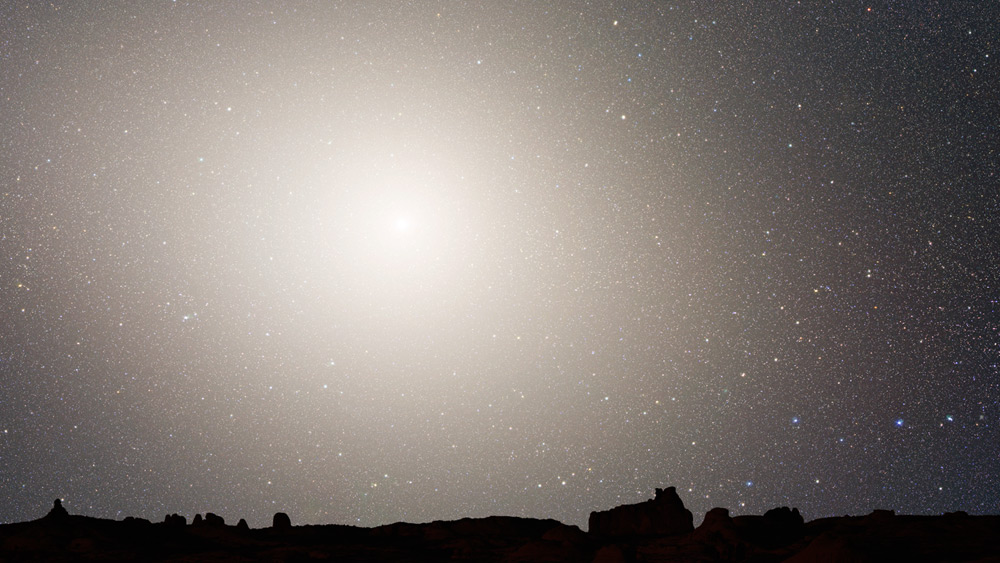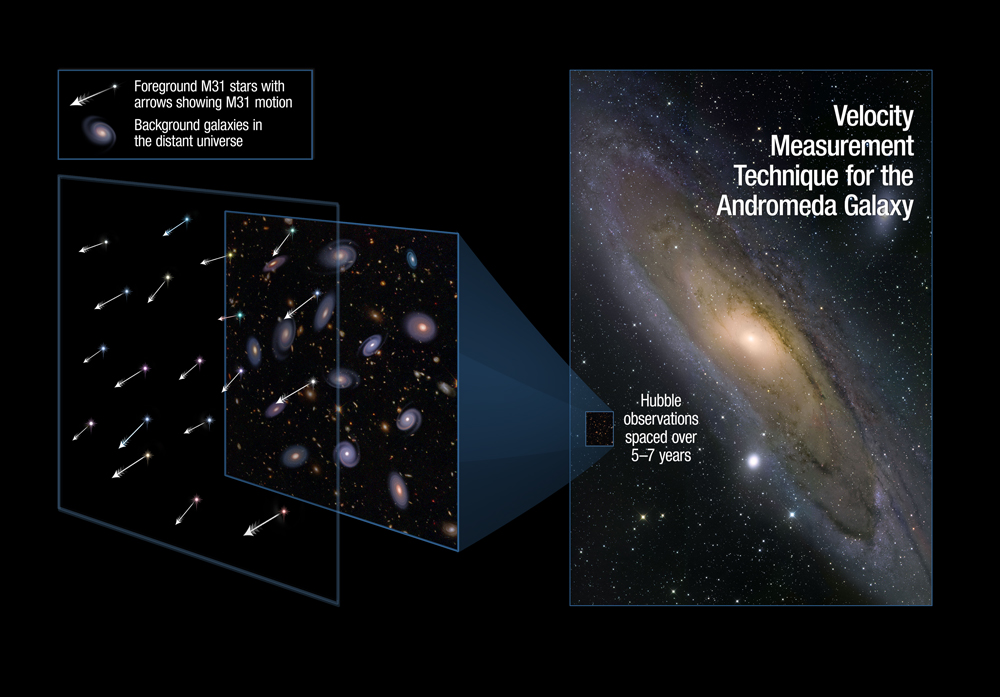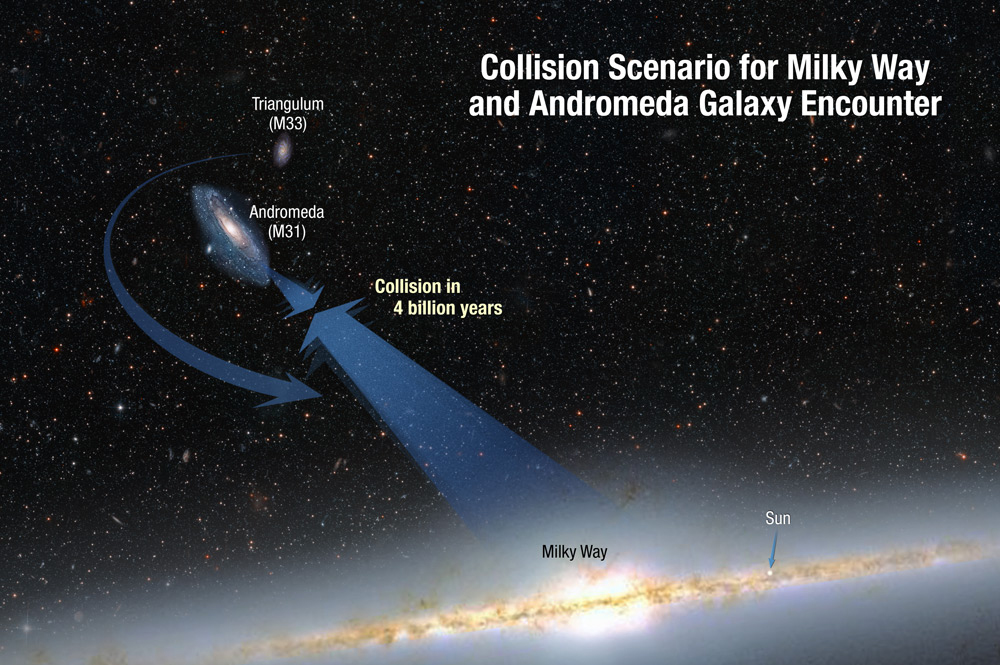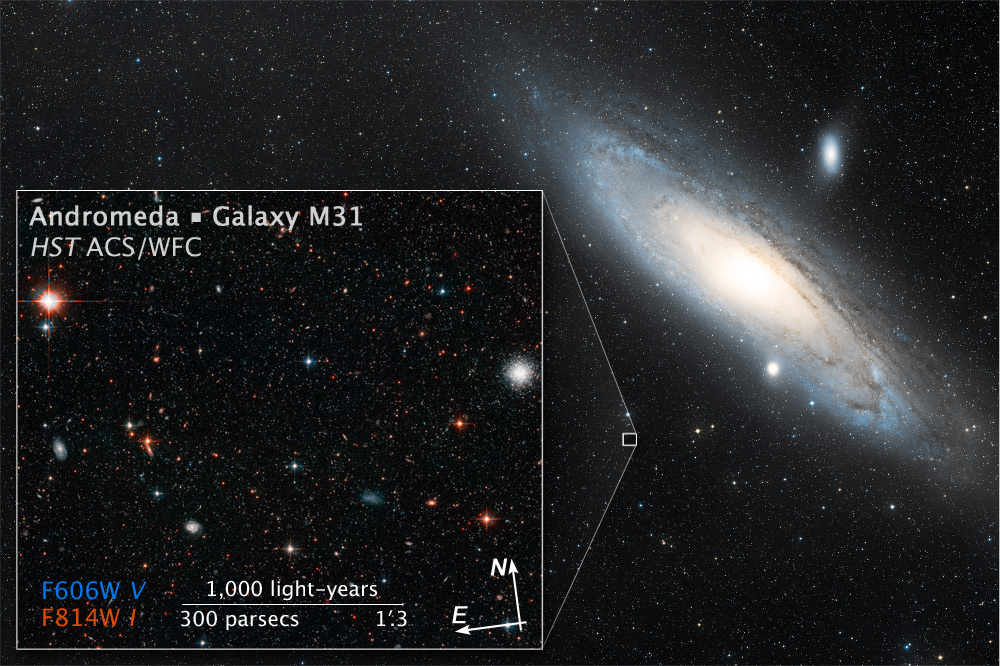Milky Way Galaxy's Head-On Crash with Andromeda (Gallery)
Nighttime Sky View of Future Galaxy Merger: 7 Billion Years

The merged galaxies form a huge elliptical galaxy, its bright core dominating the nighttime sky. Scoured of dust and gas, the newly merged elliptical galaxy no longer makes stars and no nebulae appear in the sky. The aging starry population is no longer concentrated along a plane, but instead fills an ellipsoidal volume. Image released May 31, 2012.
Measuring the Drift of the Andromeda Galaxy

This illustration shows one of the regions in the neighboring Andromeda galaxy where astronomers aimed the Hubble Space Telescope to make precise measurements of the galaxy's lateral motion. As the galaxy drifts through space, the stars will appear to uniformly move against the far-more-distant background galaxies, which remain fixed on the sky. Image released May 31, 2012.
Collision Scenario for Milky Way and Andromeda Galaxy Encounter

This illustration shows the inevitable collision between our Milky Way galaxy and the Andromeda galaxy approximately 4 billion years from now. The galaxies are moving toward each other under the inexorable pull of gravity between them. A smaller galaxy, Triangulum, may be part of the smashup. Image released May 31, 2012.
Compass and Scale Image of Andromeda

An astronomical illustration of a compass and scale image of Andromeda. Image released May 31, 2012.
Get the Space.com Newsletter
Breaking space news, the latest updates on rocket launches, skywatching events and more!
Join our Space Forums to keep talking space on the latest missions, night sky and more! And if you have a news tip, correction or comment, let us know at: community@space.com.

Space.com is the premier source of space exploration, innovation and astronomy news, chronicling (and celebrating) humanity's ongoing expansion across the final frontier. Originally founded in 1999, Space.com is, and always has been, the passion of writers and editors who are space fans and also trained journalists. Our current news team consists of Editor-in-Chief Tariq Malik; Editor Hanneke Weitering, Senior Space Writer Mike Wall; Senior Writer Meghan Bartels; Senior Writer Chelsea Gohd, Senior Writer Tereza Pultarova and Staff Writer Alexander Cox, focusing on e-commerce. Senior Producer Steve Spaleta oversees our space videos, with Diana Whitcroft as our Social Media Editor.









